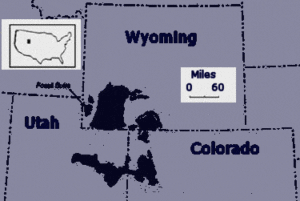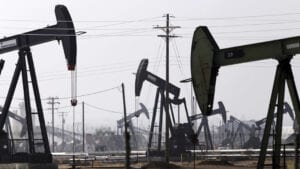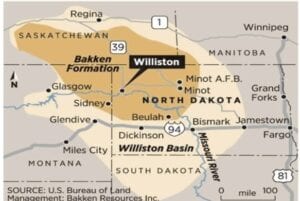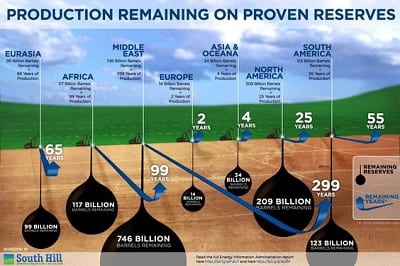A research geologist for Shell Oil Company and later the US Geological Service, King Hubbert, is credited with developing a quantitative technique (Logistic Growth Curve) now commonly referred to as the Hubbert Curve, which he suggested could be used to predict the remaining oil supplies (or any other finite resource like gas, copper, etc.) and the time of eventual depletion. It’s a scam designed to create artificial scarcity and jack up prices while giving the state an excuse to invade our lives and order us to sacrifice our hard-earned living standards. Publicly available CFR and Club of Rome strategy manuals from 30 years ago say that a global government needs to control the world population through neo-feudalism by creating artificial scarcity. Geological Surveys have estimated over a trillion barrels of recoverable oil in the Green River Formation of Utah, Colorado, and Wyoming alone.
Peak oil is a theory advanced by the elite, by the oil industry, by the very people that you would think peak oil would harm, unless it was a cover for another agenda. Which from the evidence of artificial scarcity being deliberately created, the reasons for doing so and who benefits, it’s clear that peak oil is a myth and it should be exposed for what it is. Another excuse for the Globalists to seize more control over our lives and sacrifice more American sovereignty in the meantime.
The Scientific evidence also flies in the face of the peak oil theory. Scientific research dating back over a hundred years, more recently updated in a Scientific Paper Published In ‘Energia’ suggests that oil is abiotic, not the product of long decayed biological matter. Oil, for better or for worse, is not a non-renewable resource. It, like coal, and natural gas, replenishes from sources within the mantle of earth.
The crux of the issue is that if oil was plentiful in areas in which we are being told by the government and the oil companies that it is not, then we have clear evidence that artificial scarcity is being simulated in order to drive forward a myriad of other agendas. And we have concrete examples of where this has happened.
Three separate internal confidential memos from Mobil, Chevron and Texaco have been obtained by The Foundation for Taxpayer and Consumer Rights. These memos outline a deliberate agenda to gouge prices and create artificial scarcity by limiting capacities of and outright closing oil refineries. This was a nationwide lobbying effort led by the American Petroleum Institute to encourage refineries to do this.
An internal Chevron memo states; “A senior energy analyst at the recent API convention warned that if the US petroleum industry doesn’t reduce its refining capacity it will never see any substantial increase in refinery margins.”
The Memos make clear that blockages in refining capacity and opening new refineries did not come from environmental organizations, as the oil industry claimed, but via a deliberate policy of limitation and price gouging at the behest of the oil industry itself.
The mystery of Eugene Island 330 and self-renewing oil supplies
Eugene Island is an oil field in the gulf of Mexico, 80 miles off the coast of Louisiana. It was discovered in 1973 and began producing 15,000 barrels of oil a day which then slowed to about 4,000 barrels in 1989. But then for no logical reason whatsoever, production spiked back up to 13,000 barrels a day.
What the researchers found when they analyzed the oil field with time lapse 3-D seismic imaging is that there was an unexplained deep fault in the bottom corner of the computer scan, which showed oil gushing in from a previously unknown deep source and migrating up through the rock to replenish the existing supply.
Furthermore, the analysis of the oil being produced at Eugene Island showed that its age is geologically different from the oil produced there after the refinery first opened suggesting strongly that it is now emerging from a different, unexplained source. The last estimates of probable reserves shot up from 60 million barrels to 400 million barrels. Both the scientists and geologists from the big oil companies have seen the evidence and admitted that the Eugene Island oil field is refilling itself.
This completely contradicts peak oil theory and with technology improving at an accelerating pace it seems obvious that there are more Eugene Islands out there waiting to be discovered. So the scientific community needs to embrace these possibilities and lobby for funding into finding more of these deep source replenishing oilfields. The existence of self-renewing oil fields shatters the peak oil myth. If oil is a naturally replenishing inorganic substance then how can it possibly run out?
It relies on the following five “myths”:
Myth #1. Oil is a fossil fuel and as such is a “finite” resource
Western science has bought into and taught the fossil fuel myth regarding petroleum for many many years. Researcher/author William Engdahl wrote: ” . . . Western geologists do not bother to offer hard scientific proof of fossil origins. They merely assert it as a holy truth. The Russians have produced volumes of scientific papers, most in Russian. The dominant Western journals have no interest in publishing such a revolutionary view. Careers, entire academic professions are at stake after all.” [As is the sale of many books.]
In an interview Colonial Fletcher Prouty, former government insider, explained the events surrounding the decision to categorize oil as an organic substance (fossil fuel). He points out that it was deceptively made at a world scientific conference in Geneva back in the 1892 as a result of pressure exerted by scientists employed by oil magnate John D. Rockefeller. They have never found a fossil below 16,000 feet and today oil is frequently mined at depths of 30,000 feet. This fallacy was cemented into “fact” in the early 70′s during the “energy crisis” when globalists John Rockefeller IV and Henry Kissinger convinced top U.S. government officials that a “world price” needed to be established for the “finite resource” – oil.
Here is Col Prouty’s 8 minute interview:
Modern petroleum science has disproven the ‘oil comes from fossils theory’ many years ago. As Dr J F Kenny revealed in this interview on NPR, it was never more than a theory anyway. But, because the industry still enjoys a Depletion Allowance, and the US ‘government’ under the Nixon administration created the Petrodollar, modern petroleum science has been suppressed. Legitimate critics of geologist M K Hubbert’s oil peak bell curve have also been marginalized and even ignored.
Myth #2. Government reported supply/production figures are relatively accurate and reliable
Many have long recognized that US government statistics are managed/manipulated for political reasons; therefore their accuracy is suspect. A few examples:
- Economic – cost of living and unemployment figures are manipulated and/or misrepresented (http://www.shadowstats.com/)
- Flu statistics – number of deaths each year are grossly exaggerated and CDC H1N1 statistics have been proven bogus (http://www.youtube.com/watch?v=zcHdmnTbH9Q&feature=player_embedded)
- Inaccuracy of NASA global temperature figures (http://www.theregister.co.uk/2008/06/05/goddard_nasa_thermometer/)
Few peak oil proponents wish to acknowledge that all government agencies are political. The head of these agencies are carefully selected by the Executive Branch and report directly to the President. If his political agenda isn’t carried out, the director of the agency is removed and replaced. Hence we don’t get ‘real science’ from government agencies, we get ‘political science’.
Myth #3. The market price for oil is a legitimate indicator of oil supply and demand
The market manipulation by the unholy alliance between the oil industry, Wall Street and our government was brilliantly exposed by author James Norman in his book, The Oil Card. Mr. Norman, who also exposed Enron’s stock market manipulation, used his expertise to research COMEX/NYMEX and the oil market. He discovered the same dishonest practices used by the Enron folks have been replicated to manipulate the price of a barrel of oil – for political reasons.
Myth #4. Exploration and discoveries have slowed or stopped because there is no more oil to find
While Dr. Colin Campbell reports that there have been few oil discoveries since the 60s, he neglects to mention that the industry actually capped off massive oil discoveries in Alaska. Author Lindsey Williams exposed the discovery (and capping) of the massive Gull Island oil fields in his book The Energy Non-Crisis. This fact was verified by former Senator of Colorado, Hugh Chance. It is only one example of supply destruction that has occurred to control oil availability and price for this “scarce” resource – for which the oil cartel gets a depletion allowance. Additionally, few – if any – academics understand the corporate tax structure behind the “oil depletion allowance“.
Also, many ‘peakists’ don’t bother to mention the Bakken oil field discovery in the Western United States that is taking off like a shot.
Myth #5. Corruption has little impact on the “oil market”
Many books have been written on this topic, such as: The Oil Card (stock market manipulation), The Energy Non Crisis (intentional limitation of oil supplies), and See No Evil (corrupt CIA/oil company alliance). Perhaps the most important exposé on corruption in the oil industry is Gary Allen’s The Rockefeller File. The Rockefeller family has done more to control and corrupt the oil industry than any other force and Mr. Allen offers enough documentation to indict them. Unfortunately our current justice system seems to be non-functioning regarding powerful families and corporate crimes.
Sources:
Chronology of Events Related to Peak Oil

USGS Estimates The Green River Formation Contains ‘About Equal to Entire World’s Proven Oil Reserves’

U.S. Geological Survey Estimates More than 2 Trillion Barrels of Untouched Crude Still in the Ground




